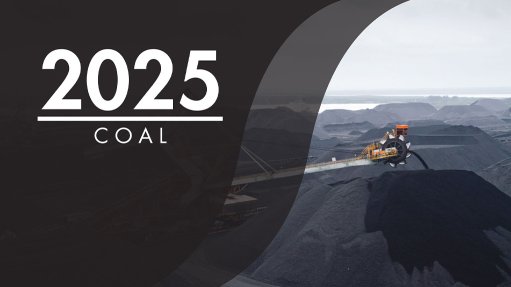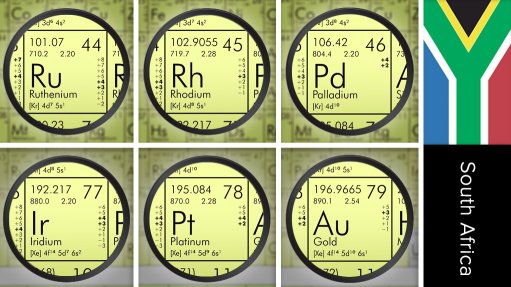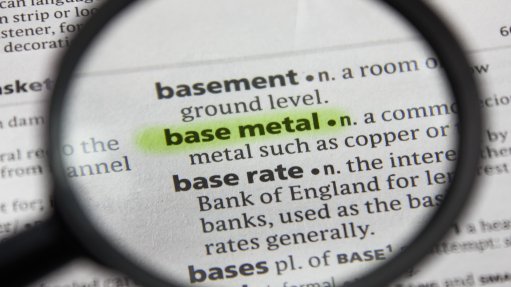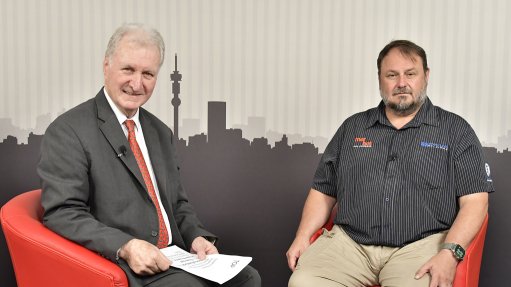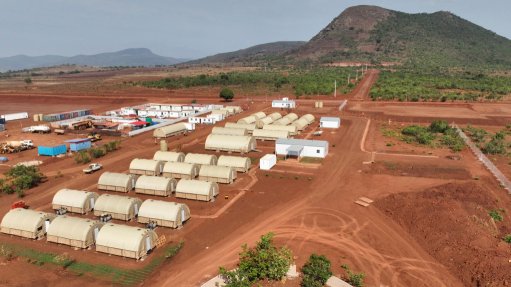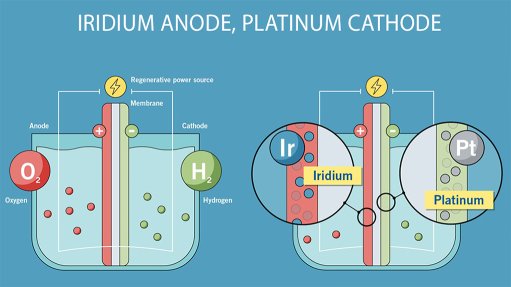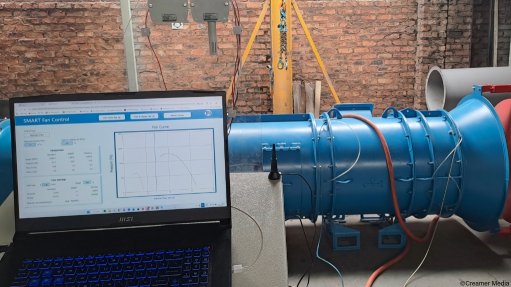Platinum, manganese, iron-ore, coal, chrome ore deemed ‘high-critical minerals’ for South Africa
Whereas every mineral is found to be critical for various reasons, the Department of Mineral and Petroleum Resources’ (DMPR’s) Critical Minerals and Metals Strategy has identified platinum, manganese, iron-ore, coal and chrome ore as “high-critical minerals” for South Africa, based on their criticality.
In a briefing regarding Cabinet’s approval of the strategy, as well as the approval for the publication of the Mineral Resources Development Bill (MRDB) of 2025 for public comment, Mineral and Petroleum Resources Minister Gwede Mantashe explained that the drafting of the strategy had started with adopting a robust methodology to determine the aspect of criticality of minerals.
This methodology was based on eight indicators including, among others, export potential, employment indicator, supply risk, export sales, domestic sales and substitutability.
The strategy further identifies mineral commodities such as gold, vanadium, palladium, rhodium and rare earth elements as minerals with “moderate to high criticality”.
Meanwhile, minerals such as copper, cobalt, lithium, graphite, nickel, titanium, phosphate, fluorspar, zirconium, uranium and aluminium were identified as minerals with “moderate criticality”.
Mantashe said this list would regularly be reviewed and updated owing to the fact that the criticality classification mix was dependent on underlying market conditions, exploration, technological advancement, substitutability, recycling and geopolitics, among other factors.
He explained that the approval of the two new policy documents was aimed at ensuring policy and regulatory certainty to advance the country's potential in the global market for minerals.
“Although the term critical minerals has been used by various nations for a considerable period, there has been no universal consensus on the definition of critical minerals, as several countries have interchangeably used and defined ‘critical, strategic or future minerals’ according to their importance in economic growth and industrialisation, technological advancements, energy transition, geopolitical considerations, supply chain vulnerabilities, environmental and social concerns and strategic importance.
“It is within this context that in 2023, we resolved at the African Critical Minerals Summit, that Africa should develop a clear roadmap on how to maximise the exploitation and monetisation of these resources for value addition to our economies.
“At the centre of this roadmap is a shared vision for the critical minerals with which our continent is endowed and thereby foster regional cooperation and economic growth,” Mantashe said.
He explained that, to realise this shared vision, the DMPR assigned Mintek the responsibility of coordinating the development of South Africa’s Critical Minerals Strategy with the intention to foster investment into exploration, beneficiation, building resilient local value chains, research and development, skills development and strengthening regional integration and international partnerships to position the country as a major player in the global critical minerals market.
“This focus ensured that minerals with the highest potential to drive economic and industrial growth are prioritised, which then provided guidance in determining the criticality of specific mineral commodities,” Mantashe said.
At least 21 commodity studies were undertaken in parallel with the work of determining the criticality of minerals. These commodity studies help to provide a clearer picture of the state of the mining industry in South Africa, as well as the contribution of each commodity to the country’s drive for inclusive economic growth, job creation and poverty alleviation.
Mantashe noted that valuable inputs into these studies were also obtained from the industry.
He pointed out that the strategy did not view critical minerals in isolation.
“Instead, they are treated as part of a larger ecosystem that drives essential technologies such as electric vehicles, hydrogen fuel cells, wind turbines, battery storage systems, microelectronics and advanced manufacturing,” he said.
To this end, Matashe explained that the strategy identified six pillars with targeted interventions for critical minerals development and beneficiation close to the point of production.
The six pillars are as follows:
1. Geoscience mapping and exploration:
The strategy recognises that mineral discovery is a function of exploration, and that geological mapping plays a vital role in identifying resource potential and directing efficient exploration efforts.
The strategy, therefore, emphasises that South Africa must prioritise exploration to sustain its mining sector and for the success of this strategy.
2. Value addition and localisation:
Cognisant of the fact that value addition and localisation reduce reliance on foreign manufacturers, boost the GDP, create jobs and develop skills, the strategy advocates for strengthening local beneficiation and manufacturing to enhance economic growth, expand the export basket and create new opportunities.
3. Research and development (R&D) investment and building a diverse skilled workforce:
The strategy prioritises investment in strategic R&D to transform South Africa’s mineral wealth into globally competitive high-tech products, by leveraging Africa’s resources and youthful population.
4. Infrastructure and energy security:
The strategy stresses investment in strategic infrastructure and energy security for sustainable mining and downstream value addition.
5. Financial instruments to support beneficiation:
The strategy stresses that a robust fiscal framework is essential to support this. Therefore, it calls for a stable and competitive environment while aligning with broader geopolitical and economic objectives.
6. Harmonisation of policy and regulatory instruments:
The strategy recognises the urgency to implement policies that can provide an enabling environment for increased mining output and improved competitiveness.
MINERAL RESOURCES DEVELOPMENT BILL
Mantashe also touched on the proposed amendments to the Mineral and Petroleum Resources Development Act, aimed at ensuring policy and regulatory certainty and enhancing investor confidence.
“Mindful of the fact that a stable legal framework is essential to attract and retain investments, foster inclusive economic growth, and sustainable resource development, the MRDB seeks to align mining legislation with evolving policies, economic conditions and global shifts while ensuring that it reflects current industry needs and government priorities,” he said.
The new Bill proposes streamlining administrative processes to ensure proper alignment with National Environmental Management Act and the National Water Act to reduce bureaucratic inefficiencies and improve turnaround times for mining rights, permits and regulatory approvals.
The Bill further introduces a licensing regime for artisanal and small-scale mining operations and, in so doing, formalises artisanal and small-scale mining operations, ensure compliance with environmental, safety, and labour regulations, as well as reduce the risk of illegal mining activities.
Mantashe was confident that the Bill incorporated many of the issues that had been raised with the DMPR over several years. Therefore, he confirmed that the Bill would be gazetted for public comment on May 20.
“We, therefore, urge all citizens as well as interested and affected parties to enhance the Bill by submitting their inputs on the Bill to the department,” he said.
Article Enquiry
Email Article
Save Article
Feedback
To advertise email advertising@creamermedia.co.za or click here
Announcements
What's On
Subscribe to improve your user experience...
Option 1 (equivalent of R125 a month):
Receive a weekly copy of Creamer Media's Engineering News & Mining Weekly magazine
(print copy for those in South Africa and e-magazine for those outside of South Africa)
Receive daily email newsletters
Access to full search results
Access archive of magazine back copies
Access to Projects in Progress
Access to ONE Research Report of your choice in PDF format
Option 2 (equivalent of R375 a month):
All benefits from Option 1
PLUS
Access to Creamer Media's Research Channel Africa for ALL Research Reports, in PDF format, on various industrial and mining sectors
including Electricity; Water; Energy Transition; Hydrogen; Roads, Rail and Ports; Coal; Gold; Platinum; Battery Metals; etc.
Already a subscriber?
Forgotten your password?
Receive weekly copy of Creamer Media's Engineering News & Mining Weekly magazine (print copy for those in South Africa and e-magazine for those outside of South Africa)
➕
Recieve daily email newsletters
➕
Access to full search results
➕
Access archive of magazine back copies
➕
Access to Projects in Progress
➕
Access to ONE Research Report of your choice in PDF format
RESEARCH CHANNEL AFRICA
R4500 (equivalent of R375 a month)
SUBSCRIBEAll benefits from Option 1
➕
Access to Creamer Media's Research Channel Africa for ALL Research Reports on various industrial and mining sectors, in PDF format, including on:
Electricity
➕
Water
➕
Energy Transition
➕
Hydrogen
➕
Roads, Rail and Ports
➕
Coal
➕
Gold
➕
Platinum
➕
Battery Metals
➕
etc.
Receive all benefits from Option 1 or Option 2 delivered to numerous people at your company
➕
Multiple User names and Passwords for simultaneous log-ins
➕
Intranet integration access to all in your organisation







